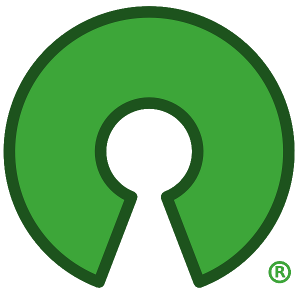

Not when discord launched. Discord had far better audio quality, multiple text and voice channels, and some moderation tools. Skype was basically a group chat with a group call function


Not when discord launched. Discord had far better audio quality, multiple text and voice channels, and some moderation tools. Skype was basically a group chat with a group call function


Where’s the talk?


I’ve been happy with AirVPN for the last year or so
I installed Arch because I liked the idea of building everything from the ground up, choosing all of my utilities, and gentoo would take too long on my laptop. Still haven’t finished my DE 2 computers and 3 years later


I’m not sure what’s going on, I can think of a couple things worth checking.
First I would make sure that all the files are being copied over properly. In a terminal window, run ‘ls -la /home’ and ‘ls -la /new_home’ or ‘ls -la /old_home’ and compare the outputs. Both should be the same and have a folder with your username. Check inside the user folder as well by appending ‘/username’ to the command (ex: ‘ls -la /home/Doctor_Rex’ but use your linux username).
The letters on the left (rwxr-xr-x or something similar) are permissions and should be the same. Continuing across the line there’s another number that isn’t important and then it should say your username twice. If it says “root” you need to update the owner of the files. this can be done by running ‘sudo chown -r username:username /home/username’ where “username” is your linux username.
Lots of configuration settings are stored in files or directories that start with a ‘.’ and are hidden by most file managers and ‘ls’ by default. If these are missing it’d cause problems.
If everything looks the same, you could try logging in from a TTY. This won’t start a GUI, but it will allow us to see if you can log in at all. You can switch to another TTY by pressing ctrl+alt+any function key (f1/f2/f3/etc). Most distros use TTY1 or TTY7 for their GUI, so try ctrl+alt+f2. If it doesn’t change to a terminal screen, try another function key. From there it should prompt you to enter a username and password. Try and log in to your account. If you can, it’s probably an issue with KDE, if you can’t there’s still something wrong with how you have the drives mounted, missing files, or incorrect file permissions.
Sorry if the formatting is a little chaotic, I added the part about checking ownership in after writing the rest
Seeding doesn’t take up space, as long as it’s on your disk you should seed it.
Why limit seeding unless you’re on a metered connection?
It will lead to the torrent dying if everyone stops seeding
A, C, D, B; it seems we’re in agreement :3


Not that I’m aware of. It may be worth opening an issue on the github asking about reduced motion accessibility settings
I haven’t seen anyone mention Mirror’s Edge yet! The free running (especially in the first game) is such a unique and rewarding experience. A little janky and frustrating sometimes but when it clicks it just feels so good
Docker is professional software and because of that isn’t always the most intuitive thing to use.
The first big thing to get your head around is that there is no GUI. Everything you do to manage docker is through the command line. If you really want to, there’s some third party GUI software for managing Docker, but I haven’t used it in the 2 years I’ve been using Docker.
Once you’ve installed docker, there’s a little bit of setup required to make it run smoothly. The Docker Docs page on Linux post-installation steps has detailed instructions on how to do that and how to run a test container
You’re right. The comments here have been really weird and kinda missed the whole point of OP’s post.


Going over your steps, it looks like you forgot to copy the contents of your old home directory (partition A) into the new partition on drive B before editing your fstab file. This would cause the system to boot and not find any home directory (because once you change the fstab file it only knows to look for it on drive B) and then fail to log you in.
You also shouldn’t have to remount your home directory (partition A) before copying files over because it’s already mounted when you boot your system.
Hope this helps! Let me know if you have any questions!
TMNT was definitely still around in the early 2000s, although I don’t know how that version compares to earlier ones.
And the GI Joe movies count… right? :p


+1 for kitty. Embedded images for Ranger is super cool. The only downside is i’ve been getting rendering issues for a couple seconds after waking up from suspend but that’s probably a configuration issue on my end


I believe in you :3


People who put the time and money into a gamer ass setup are more likely to post! Share yours!

It’s just text that says
Whenever I try to get people to understand where they *actually* are in the class war, the reminder that “you are *always* three very bad months away from being homeless, but *never* three very good months away from being a millionaire”, can be clarifying.
If you haven’t heard of them it’s because they haven’t released and games ever